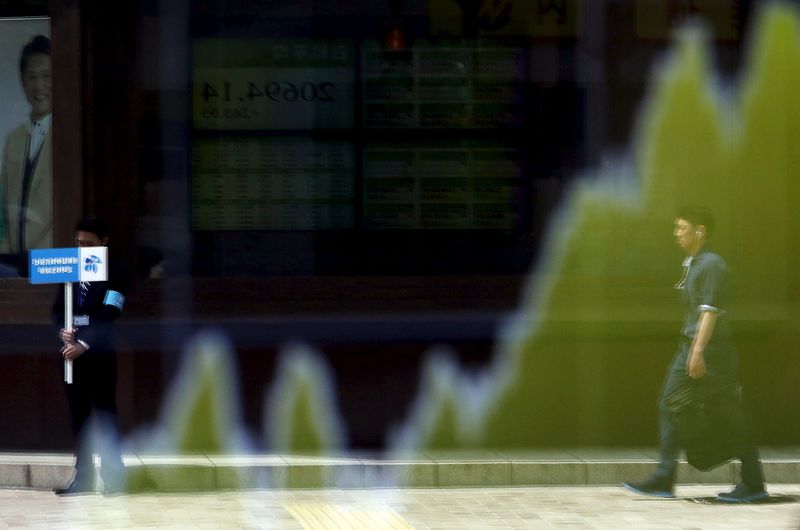Investing.com– Most Asian stocks rose in choppy trade on Thursday amid some cheer over an outsized interest rate cut by the Federal Reserve, while Japanese markets surged as the yen weakened before a Bank of Japan meeting.
Gains in regional markets were somewhat subdued following a weak overnight close on Wall Street, as optimism over a bumper 50 basis point rate cut by the Federal Reserve was offset by the central bank presenting a higher outlook for neutral rates. The outsized cut also raised some concerns over slowing economic growth.
U.S. stock index futures, however, rose sharply in Asian trade.
Japanese stocks rally as yen weakens post-Fed; BOJ awaited
Japan’s and indexes vastly outperformed their regional peers on Thursday, rising between 2% and 2.8%.
Gains in local markets came tracking a softer yen, which weakened sharply from near nine-month highs after the Fed meeting. The yen was pressured by a surge in the dollar.
Japan’s stock rally also reflected some positioning before the conclusion of a , where analysts are uncertain over another interest rate hike.
But a string of BOJ officials had offered up hawkish signals in the weeks leading up to Friday’s meeting, stating that the central bank will raise interest rates as inflation picks up.
Japanese is due on Friday and is set to offer more cues.
Asian stocks show middling reaction to Fed cut
Gains in Asian stocks were somewhat subdued on Thursday, even as the Fed cut rates sharply and signaled the beginning of an easing cycle.
Australia’s rose 0.3%, pressured by another strong reading on the , which gives the Reserve Bank of Australia more headroom to keep rates high for longer.
China’s and indexes rose 0.5% and 0.4%, respectively, extending a mild rebound from seven-month lows. Hong Kong’s index added 0.6%.
The People’s Bank of China is set to decide on its benchmark on Friday, although analysts expect no changes, given Beijing’s conservative approach to more stimulus.
South Korea’s fell 0.5% in catch-up trade after a three-day break, while futures for India’s index pointed to a positive open, with the index in sight of new peaks.
The Fed’s Powell quelled some concerns over a weakening economy, stating that risks of higher inflation and a weakening labor market were now balanced.
But the Fed Chair said that neutral rates will be much higher than those seen earlier, and that the central bank had no intention of returning to an ultra-low rate regime as seen during the COVID-19 pandemic.
His comments raised some questions over just how much rates will fall in this easing cycle, and presented a higher outlook for rates in the medium-to-long term.
Read the full article here















